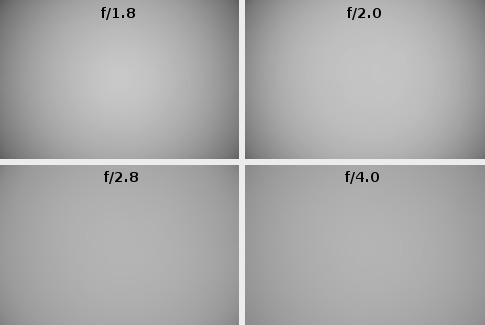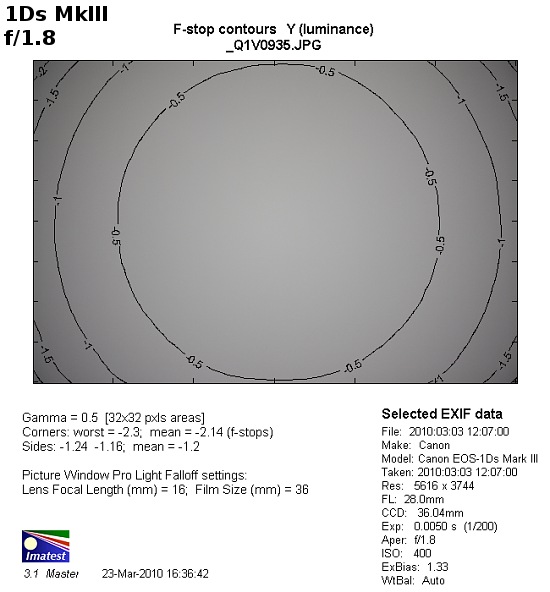Canon EF 28 mm f/1.8 USM
8. Vignetting

At the maximum relative aperture the brightness loss in the frame corners reaches 22% (-0.73 EV). Although this value is noticeable, it shouldn’t disturb us in the case of most applications. On stopping down to f/2.0 the vignetting decreases to 15% and by f/2.8 it becomes completely imperceptible (9%).
Please Support UsIf you enjoy our reviews and articles, and you want us to continue our work please, support our website by donating through PayPal. The funds are going to be used for paying our editorial team, renting servers, and equipping our testing studio; only that way we will be able to continue providing you interesting content for free. |
- - - - - - - - - - - - - - - - - - - - - - - - - - - - - - - - - - - - - - - - - - - - - - - -
Of course the full frame sensor will raise standards quite significantly in this category. The photos below show it very well.

If we decide to take photos at the maximum relative aperture we must take into account the fact that we will lose 52% of light in the frame corners (-2.14 EV). On stopping down to f/2.0 the brightness loss decreases slightly because then its value amounts to 45%. By f/2.8 the light fall-off in the corners reaches still noticeable level of 28%. We will be able to perceive this aberration also by f/4.0 where it is 22%. On further stopping down the aperture we don’t see any measurable vignetting decrease.
What’s interesting, the Canon 1.8/28, although distinctly smaller than the Sigma 1.8/28, copes with the vignetting better.
 |






